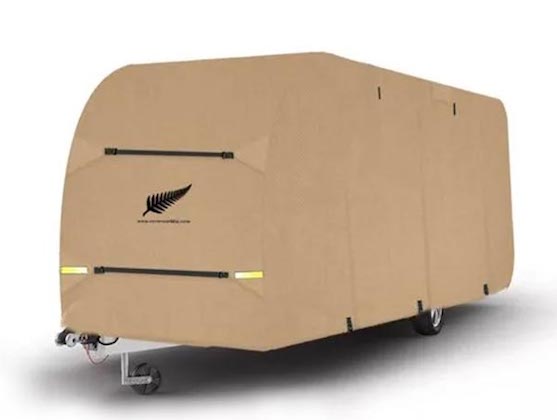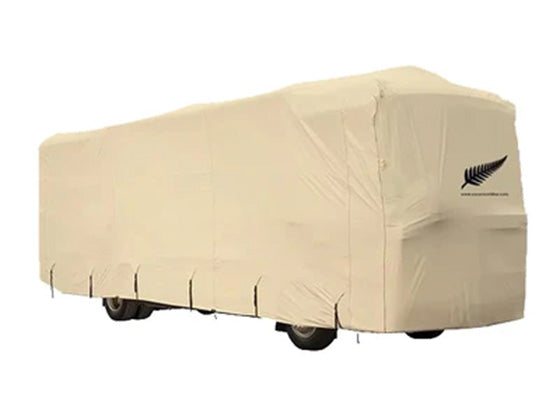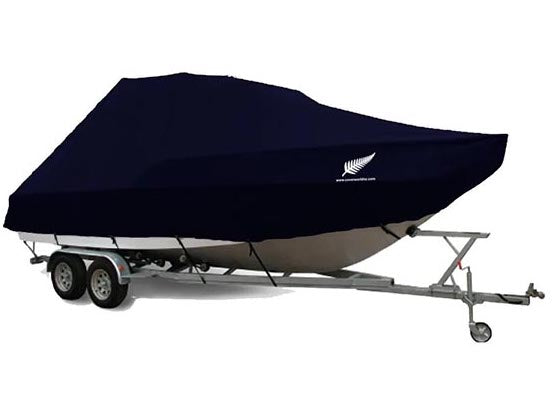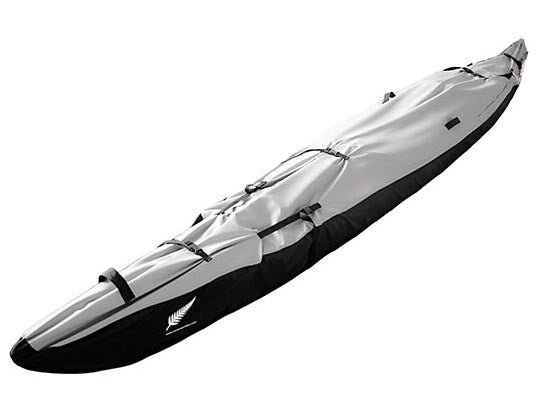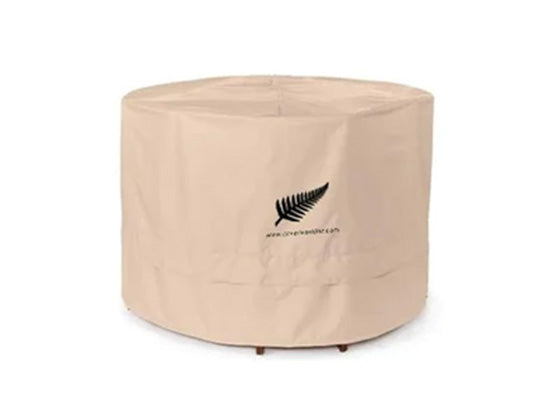Outdoor furniture covers are important for protecting your patio furniture from rain, snow, and sun damage. They help maintain the look and quality of your outdoor furnishings all year round. Using them properly can prevent early damage caused by harsh weather conditions.
In this article, we will explore:
- Tips for using outdoor furniture covers effectively
- Strategies for storing and maintaining these covers
The goal is to provide a complete guide that helps you protect your investment better. By following these tips, you can extend the lifespan of your outdoor furniture covers and keep your patio furniture in great condition for longer.
1. Preventing Damage from Wind
When it comes to outdoor furniture, wind can be a big problem. If you're not careful, your protective covers (and even your furniture) could get damaged or blown away during a strong gust. But don't worry! There are simple and effective ways to prevent this from happening and keep your covers in place.
1.1 Using Cover Clamps
Cover clamps are ingeniously designed tools essential for securing your outdoor furniture covers, including Covermates patio furniture covers and patio tarp covers, when gusty winds threaten your outdoor setup. These clamps are adept at tightly grasping the cover material, offering a fortified layer of protection against the wind, preventing scenarios where your furniture flies through the air.
Here's a detailed method on employing cover clamps effectively:
-
Spread the cover over the furniture: Ensure the outdoor cover for chaise lounge, DIY patio furniture cover, or outdoor furniture covers for round table and chairs is uniformly draped over all sections of the furniture. This is crucial for providing complete coverage and protection.
-
Position the clamps: Strategically place them along the periphery of the cover. Pay special attention to corners and any segments prone to uplift. This step is vital for the stability of weighted outdoor furniture, as it adds a layer of security.
- Attach the clamps: Pry each clamp open sufficiently to encompass both the cover fabric and a segment of the furniture's edge. This method ensures a snug fit, vital for deck anchors for furniture to withstand high winds.
-
Secure tightly: With the clamps correctly positioned, clamp them down securely, ensuring you don't damage the cover. This step is fundamental in how to cover your furniture effectively, safeguarding against wind lift and potential damage.
- Check tension: Conduct a final tension check by gently tugging on the cover. This ensures it's securely fastened with no slack areas that could be vulnerable to wind, embodying the essence of how to store outdoor furniture covers securely.
By using cover clamps the right way, you can be confident that your outdoor furniture covers will stay put and shield your precious pieces from weather damage.
1.2 Securing with Weights or Rocks
If you don't have or prefer not to use cover clamps, another effective method is to anchor your covers with weights. This way, even if there's a strong breeze, they won't go flying off.
Here are some options for using weights:- Sandbags: Place them evenly around the edges of your covered furniture. The weight of the sand will help keep your covers from lifting.
- Water-filled containers: Use these instead of sandbags if they're more convenient for you. They work in a similar way by providing weight to hold down the covers.
- Natural Rocks: If it fits your garden style and makes sense in your setup, strategically placing rocks can serve as both decorative elements and cover weights.
Whichever method you go for, make sure that the weights you use won't cause any harm to your furniture or covers (like sharp edges or too much pressure).
By following these strategies—using cover clamps or securing with weights—you effectively prevent covers from flying off and protect your investment from wind damage. These measures not only make your outdoor furniture last longer but also keep them looking great throughout the seasons.
1.2 Securing with Weights or Rocks
While cover clamps serve as a robust solution to prevent your outdoor furniture covers from flying off during strong winds, an equally effective alternative is the use of weights. This method relies on placing heavy objects on top of the covers to hold them down.
1.2.1 Suitable Options for Weights
There are several suitable options available for securing your outdoor furniture covers with weights:
- Sandbags: Sandbags are a common choice due to their weight and flexibility. They can easily conform to the shape of your furniture and stay in place even in windy conditions.
- Water-filled containers: Water-filled containers also work well as weights. These containers offer the advantage of being adjustable - you can simply fill them with more or less water to achieve the desired weight.
1.2.2 Using Rocks as Weights
Another method involves using rocks as weights. If you have a landscaped garden, chances are you'll find some rocks that could double up as cover weights. Just ensure that the rocks aren't sharp-edged as they could potentially puncture or tear your covers.
Important:
While securing your covers with weights, it's crucial to strike a balance between secure and excessive weight. Remember, if the objects are too heavy, they may cause tears in the fabric of your covers.
In essence, securing your outdoor furniture covers with weights or rocks can be an effective way to prevent damage from wind. Whether you choose sandbags, water-filled containers, or rocks, make sure they are securely placed so that your covers stay put, even in high winds.
2. Dealing with Water Issues
Water pooling is a prevalent dilemma with outdoor furniture covers, including Covermates patio furniture covers and patio tarp covers. If neglected, this issue can foster the growth of mold and mildew, which not only disfigures the covers with stains but can also compromise the fabric's integrity, diminishing their protective efficacy and durability.
To combat water pooling effectively and extend the lifespan of your outdoor furniture covers, implementing a strategic solution involving air bags or foam tubes is advisable. These devices ingeniously create an incline on the cover's surface, facilitating the diversion of rainwater away rather than allowing it to gather.
Here's a step-by-step guide on how to utilize this solution efficiently:
-
Choose the right type: Air bags are available in diverse shapes and sizes to accommodate different types of furniture. For example, a round air bag is ideal for outdoor furniture covers for round table and chairs, while a rectangular one is more suited for an outdoor cover for chaise lounge. Selecting the correct form ensures the most effective water runoff.
-
Position correctly: The strategic placement of the air bag or foam tube is crucial. Situate it at the center or the apex of your furniture piece prior to covering it. This precaution is to guarantee there aren't any sharp objects beneath that might puncture these tools, offering a smooth slope for water to slide off, which is especially important for DIY patio furniture covers and weighted outdoor furniture that might collect water more readily.
- Secure the cover: Once you've correctly positioned the air bag or foam tube, proceed to drape the cover over your furniture in the usual manner. Ensure the cover fits snugly yet is not excessively tight around the air bag or foam tube and the furniture's edges. This step is vital in preventing water from pooling by maintaining the structural integrity of the cover, thereby safeguarding your furniture. It encapsulates the essence of how to cover your furniture effectively, avoiding potential damage from water accumulation.
Remember, proper handling and placement of these tools are key to maximizing their water-draining potential and protecting your outdoor furniture covers from water-related damage.
3. Proper Installation and Removal Techniques
When it comes to protecting your outdoor furniture, the proper installation of covers is as crucial as selecting the right type of cover. Especially with larger pieces, enlisting help from others can prevent mishandling and ensure a secure fit. Here's how to put on large covers with an extra set of hands:
Putting on Large Covers with Assistance
- Prepare the Area: Before you begin, clear the surrounding area of any sharp objects or debris that could catch and rip the cover.
- Spread Out the Cover: Lay the cover flat on the ground and unfold it completely. Identify the front and back sections, which are often marked by tags or labels.
- Align with Furniture: With your helper, align the cover's front section with the corresponding part of the furniture. Ensure that all sides are evenly positioned to cover each section adequately.
- Gently Place Over Furniture: Lift the cover together, holding opposite corners to maintain balance and control. Gently place it over the top of the furniture piece, being careful not to let it snag on corners or protrusions.
- Secure in Place: Once positioned, pull down all sides to ensure full coverage. Secure any built-in ties or straps to keep the cover snug against the furniture, preventing wind from getting underneath.
Using this method reduces strain on both you and the cover. It promotes even distribution of material, preventing tears or stretching that can occur when one person attempts to handle a large, unwieldy cover alone.
Removing Large Covers with Assistance
When removing covers:
- Check for Water or Debris: Before lifting off the cover, make sure there's no standing water or accumulated debris like leaves or twigs.
- Fold Carefully: As you remove the cover, fold it in sections onto itself, clearing any dust or dirt that might have settled on top.
- Avoid Dragging: Never drag the cover across your furniture or ground as this can cause damage. Instead, lift it away carefully ensuring no part catches on edges or fixtures.
- Store Safely: Once removed and folded neatly, store your cover in a dry area away from direct sunlight or moisture until it’s needed again.
By following these steps for putting on and removing covers with assistance, you ensure that your outdoor furniture remains in pristine condition under its protective layer. The covers themselves also benefit from this careful handling, extending their lifespan and maintaining their aesthetic appeal.
3.2 Removing Large Covers Safely
Handling large outdoor furniture covers requires attention and care to prevent damage to both the covers and the furniture. When it's time to enjoy your outdoor space without the covers, you need to remove them with as much care as you used when putting them on.
Enlist Help from Others
Just as you needed assistance putting on large covers, removing them is also a two-person job. This helps ensure that the cover can be lifted away without catching on corners or edges, which could tear the fabric or scratch the furniture.

Step-by-Step Guide for Removal
- Coordinate with Your Helper: Communicate clearly with your partner about which side each of you will handle.
- Lift Gently: Both of you should lift the edges of the cover gently off the furniture, taking special care not to drag it across any sharp points.
- Shake off Debris: Before fully removing the cover, shake it gently to dislodge any leaves, twigs, or debris that could dirty or puncture it during storage.
- Fold Together: Once the cover is off, fold it in broad, even sections. Continue folding collaboratively until the cover is in a manageable size for storage.
Careful Folding and Storage
- Lay the cover flat on a clean surface and smooth out any wrinkles.
- Fold in sides to create a neat rectangle.
- Continue folding until the cover is compact.
- Place the folded cover in a storage bag or container designed for this purpose to keep it clean and protected.
By following these steps, you safeguard your investment by ensuring your outdoor furniture covers remain in prime condition for their next use. Next, we'll move into essential maintenance practices that will further enhance your covers' longevity and effectiveness.
4. Essential Maintenance Practices
Just as you would care for your outdoor furniture, the covers that protect them require consistent maintenance. A well-executed cleaning routine can ensure their durability and performance in protecting your outdoor pieces.
4.1 Regular Cleaning Routine
Your outdoor furniture covers are exposed to dirt, debris, bird droppings, and other unsightly stains over time. Hence, keeping up with a regular cleaning routine is crucial.
- Ensure to gently hand wash your covers with mild soap and water.
- Using a soft bristle brush can be effective in removing any stubborn dirt or stains.
- Rinse thoroughly to make sure no soap residue remains on the fabric.
While it might be tempting to toss these covers into the washing machine or use strong detergents for a quick cleanse, avoid doing so. These actions can lead to irreversible damage to the fabric.
- Harsh Chemicals: The use of bleach or other harsh chemicals can cause discoloration and weaken the fabric over time.
- Machine Washing: Similarly, machine washing can cause the covers to stretch or warp due to the aggressive spinning cycle.
Remember, cleaning outdoor furniture covers should be done with care and caution. It's not just about keeping them clean; it's about preserving their ability to protect your furniture from weather elements.
As we continue our discussion on maintenance practices, we must not forget the importance of proper drying and storage methods after cleaning - these practices are equally crucial in maintaining the longevity of your outdoor furniture covers.
4.2 Adequate Drying and Storage
Proper cleaning of your outdoor furniture covers is only half the battle, proper drying is just as important. Moisture left on the covers can encourage the growth of mold and mildew, which can cause unpleasant odors and damage the fabric over time. To ensure a long lifespan for your covers, make sure they are completely dry before storing them.
Here's how to do it:
- After washing your covers with mild soap, leave them to air dry. Avoid using heat to speed up the process as this can shrink or warp the material.
- Lay out your cover flat on a clean surface. Starting from one side, fold it in thirds or quarters depending on its size. Be sure to smooth out any wrinkles as you go.
- Once your cover is neatly folded, it's now ready for storage. Ideally, outdoor furniture covers should be kept in a clean and dry storage bag or container.
Choosing a suitable storage solution plays a vital role in maintaining the condition of your outdoor furniture covers. A storage bag protects the cover from dust and pests, while a sealed container offers additional protection against dampness.
By following these steps for cleaning and storing outdoor furniture covers, you can ensure that they remain in top condition, ready to provide robust protection for your outdoor furniture whenever needed.
5. Conclusion
Investing in outdoor furniture comes with the responsibility of ensuring its longevity. Embracing tips for using outdoor furniture covers significantly contributes to this cause. From preventing wind damage with cover clamps and weights, to addressing water issues with air bags and foam tubes, each measure plays a crucial role in protecting your furniture.
Remember, a proper installation and removal technique is just as vital as regular cleaning routines. Treat your covers gently, avoid harsh chemicals, and always store your covers only when they are thoroughly dried.
With these maintenance practices in place, you can effectively utilize your outdoor furniture covers. This not only ensures a well-kept outdoor space but also guarantees protection for your investment in the long run. Your outdoor furniture is worth every bit of effort put into its preservation. So make sure it receives the care it deserves!
FAQs
1. Why is it important to use outdoor furniture covers?
Using outdoor furniture covers is crucial for protecting your patio furniture from rain, snow, and sun damage. They help maintain the appearance and quality of your outdoor furnishings, preventing premature damage from harsh weather conditions.
2. How can I prevent my outdoor furniture covers from blowing away in the wind?
To prevent covers from blowing away, you can use cover clamps to secure them tightly around the furniture. Alternatively, anchoring the covers with weights such as sandbags, water-filled containers, or natural rocks can also effectively keep them in place during strong winds.
3. What are some effective ways to secure outdoor furniture covers?
Besides using cover clamps, securing your covers with weights is an effective method. Options include using sandbags, water-filled containers, or strategically placed rocks to prevent the covers from flying off.
4. How do I deal with water pooling on my outdoor furniture covers?
To combat water pooling, employ strategic solutions like air bags or foam tubes, which create an incline on the cover's surface, guiding rainwater off the cover instead of allowing it to accumulate.
5. Can I machine wash my outdoor furniture covers?
It's generally recommended to gently hand wash outdoor furniture covers with mild soap and water instead of machine washing. Using harsh chemicals or the aggressive spinning cycle of a machine can damage the fabric and reduce the cover's effectiveness.
6. How should outdoor furniture covers be stored when not in use?
After ensuring the covers are completely dry, fold them neatly and store them in a clean, dry storage bag or container. This protects the covers from dust, pests, and dampness, maintaining their condition for future use.
7. What are the benefits of using cover clamps for outdoor furniture covers?
Cover clamps provide an extra layer of protection against wind by tightly gripping the cover material. This prevents the furniture and covers from getting damaged or blown away during strong gusts.
8. What should I do if my garden doesn't have suitable rocks for weighting down covers?
If you don't have natural rocks available, consider using sandbags or water-filled containers as alternative options for weighting down your outdoor furniture covers.
9. How do I ensure my outdoor furniture covers fit properly?
When choosing outdoor furniture covers, select the right size and type for your specific pieces. Properly positioning and securing the cover, whether through ties, elastic edges, or weights, will ensure a snug fit.
10. Are there DIY options for outdoor furniture covers?
Yes, creating your own cover with durable materials like tarp or waterproof fabric can be an effective solution. Ensure you measure your furniture accurately and add securing mechanisms like ties or elastic for a custom fit.
